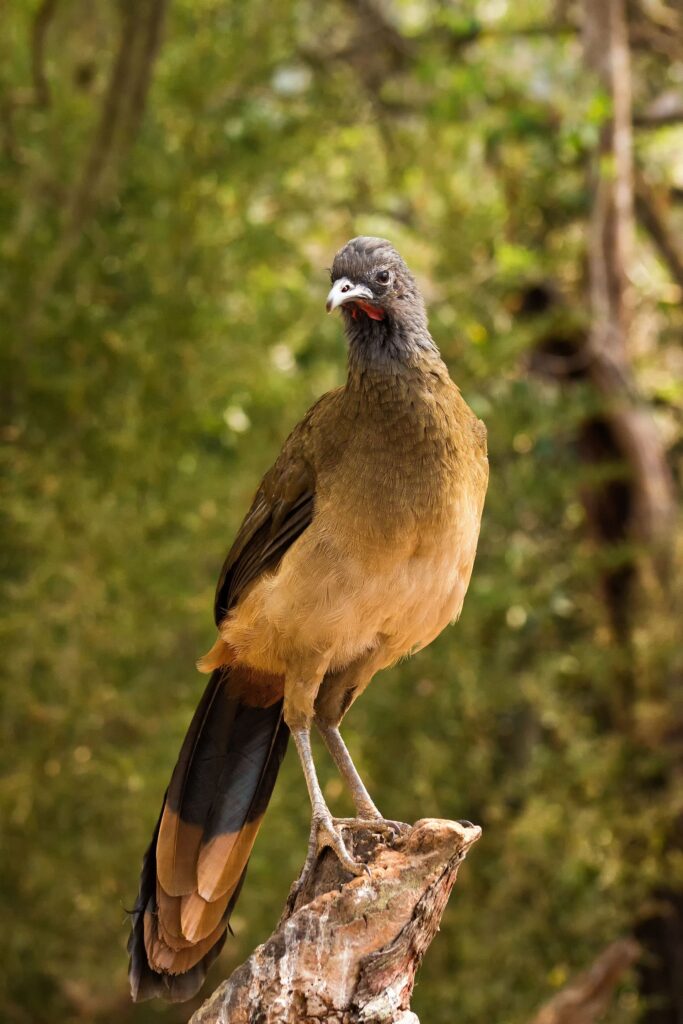The Chachalaca
The name of the dance called the Cha Cha is derived from the shuffling sound of the dancers’ feet when they dance two consecutive quick steps. It is an onomatopoeia, meaning that the name comes from a sound. Originally from Cuba, it was first called the Cha Cha Cha as the footwork goes one, two, cha cha cha. Not that I’m any expert – I couldn’t dance the Cha Cha if my life depended on it.
Then there is the bird, the Chachalaca. There are two explanations for the name. It may be onomatopoetic, named after their call, or it may be of a different derivation from the late 19th century native South American language, Classical Nahuatl chachalacani (“tattler, gossiper”).
The species I saw was the endemic West Mexican Chachalaca, Chachalaca poliocephala (meaning gray-headed chachalaca). Their diet consists mostly of fruit, and to some extent seeds, acorns, leaves and insects. They forage mostly in trees, running along branches but occasionally descending to the ground. Some species will overwhelm bird feeders when fruit is offered.

I just spent a week in coastal Mexico near a large lake where I observed and heard numerous chachalacas, usually in loose groups in large trees. There are 13-16 species of chachalacas, distributed from the far southern U.S. to South America. To the left is the Rufous-vented Chachalaca
Social birds belonging to the order Galliformes (along with chickens, turkeys, quail, and peacocks) and the family Cracidae (chachalacas, guans, and currasows), chachalacas somewhat resemble underfed chickens with long tails. They have small heads, relatively long necks and legs, they are mostly brown or tan with some species having areas of red, gray, cream, black, or blue. Most chachalacas are about 20 inches long and weigh a pound or less. They build nests in trees, laying two to three large white eggs, which only the female incubates. The young are precocial and are born with an instinct to immediately climb and seek shelter in the nesting tree. They are able to fly within days of hatching
Chachalacas tend to gather in groups and be very vocal, calling to each other from mid-level in the trees. They are often the most obvious sound of the forests where they live. The birds are known for their raucous vocalizations; talkative persons in Spanish-speaking areas of Central and South America are sometimes called chachalacas.
Many species of chachalacas are hunted. In four counties of southern Texas, the Plain Chachalaca, Ortalis vetula, hunting season is late October through February. Their low populations, drab coloration, and habit of staying low in thick brush when threatened rather than flying makes them a challenge for hunters. The bird tends to be on a hunter’s bucket list after he or she has bagged the more common species.
Latest Posts